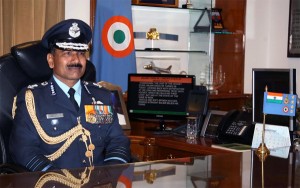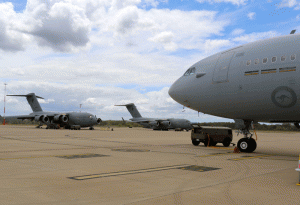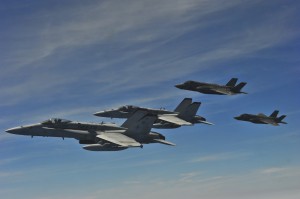2014-08-22 By Ed Timperlake and Robbin Laird
A neglected aspect of the ISIS assault is in the domain of information warfare.
IW is even more central to US capability than is cybersecurity.
Yet IW remains in the fallow ground, while US and Western competitors hone their skills.
Is ISIS winning or losing?
ISIS is doing everything they can through twitter and other means to project an inevitability about “their” victory; indeed, who is the “they”?
ISIS is projecting themselves as a state actor not a non-state actor. Accepting this assertion is tantamount to accepting them as a legitimate force, which they clearly are not.
The ISIS are playing the game of trying to position themselves as an inevitable force, something akin to a rock rolling down the mountain. We see regular “press” releases from ISIS forces via the social media, but a key element of the ability to dominate the battlespace and to defeat ISIS is in the world of ideas.
ISIS is a brutal force which asserts that only themselves have the right to rule in the Middle East and beyond. We can call them extremist; but that is not enough. We need to engage in the battle of ideas as well for it is Western secularism and tolerance which is the enemy, not “Jews” or “Christians,” Shiites or Sunni; it is about power dominance via exploiting ideological purity and mobilization of the “faithful” to achieve the purity of rule desired by the ISIS leadership and followers.
Clearly, a number of stakeholders in Western values get this.
The Dutch have outlawed the ISIS flag.
The Australians are working the problem as a fundamental challenge to their values.
According to the former head of the army, Peter Leahy, told The Weekend Australian:
The country was ill-prepared for the high cost of fighting a war that would be paid in “blood and treasure” and would require pre-emptive as well as reactive action.
“Australia is involved in the early stages of a war which is likely to last for the rest of the century,” he said. “We must be ready to protect ourselves and, where necessary, act pre-emptively to neutralise the evident threat. Get ready for a long war….”
Professor Leahy said politicians needed to “develop an honest and frank dialogue” with the Australian public.
“They should advance a narrative that explains that radical Islamism and the terrorism it breeds at home and abroad will remain a significant threat for the long term, it will require considerable effort, the expenditure of blood and treasure and it will, of necessity, restrict our rights and liberties,” he said.
Professor Leahy is the director of Canberra University’s National Security Institute and part of the Abbott government’s team carrying out a comprehensive review of Defence.
He said radical Islamists intent on a new world order were already a threat to the survival of nations in the Middle East and Africa.
If the declared caliphate in Syria and Iraq survived, bases would be established there for attacks on the West and that would embolden “home grown” radicals to attempt attacks in Australia. Military action would be needed to eliminate the threat.
Radicals saw the West as “the far enemy” and they were undoubtedly planning more attacks in Australia. Senior intelligence believes the view that the threat posed by radical Islam would pass was “optimistic….”
Professor Leahy said the threat was likely to worsen as radicals returned from overseas and the internet dumped Islamist propaganda into Australian
living rooms.Some efforts at deradicalisation had begun but a much greater effort must be made to engage Muslim clerics and Islamic thought leaders to debunk radical ideologies being offered to young Australians.
“Dual nationality must be reviewed and, where appropriate, terrorists and their sympathisers either expelled from Australia or denied re-entry,” he said.
Professor Leahy said Australia must support moderate nations with radical Islamist problems, such as Indonesia and The Philippines.
Another way to fight the ISIS-type propaganda is to shape solidarity among those forces being threatened with extinction by ISIS-type radicalism.
As noted earlier on the SLD Forum:
Information War is now being engaged in by US and freedom loving people against ISIS.
We did an interview with Joseph Kassab and he described to us that there are many very decent and well intentioned individuals representing religions that are paying a terrible price by the murderous intent of ISIS.
http://sldinfo.wpstage.net/the-iraq-dynamic-working-with-kurds-to-save-iraqi-christians/
Mr. Kassab just notified us of this conference, we are bringing it to our readers attention:
And with Secretary Hagel’s warning about ISIS attacking America every US talking head on TV defending Islam as the Religion of Peace or commenting on moral parity between Hamas –Vs Israel- should first denounce ISIS before they start any of their talking points.
Denouncing ISIS over and over really will begin to change the narrative for the good of our safety.
Recently, Pope Francis weighed in on the importance of dealing with the threat posed by an extremist force such as ISIS.
Pope Francis, deliberately avoiding kinetic war, understands and has spoken out forcefully on the need for moral Information War against ISIS.
The world is crafting a powerful message about stopping those who kill innocents in the name of Islam.
“In these cases, where there is an unjust aggression, I can only say that it is licit to stop the unjust aggressor,” Pope Francis told journalists.
“I underscore the verb ‘stop.’ I’m not saying ‘bomb’ or ‘make war,’ just ‘stop.’ And the means that can be used to stop them must be evaluated.”
Pope Francis also went out of his way to deal with the unspeakable acts of ISIS with regard to beheading a journalist.
Moved by the grisly images of James Foley’s murder, Pope Francis expressed his condolences to the slain journalist’s parents in a heartfelt phone call.
And to be clear, IW is not simply a foreign policy contest; it is about security at home as well.
According to a story on CBS Colorado published on August 21, 2014:
The director of the FBI visited Colorado this week and detailed how the terror organization ISIS is recruiting Americans to take up their cause.
It’s not just the recruitment of Americans that’s concerning to the FBI, it’s the method of recruitment — the Internet.
FBI Director James Comey said how they are recruiting new members is getting the attention of the U.S. government.
“We have seen an emergence since I was last in government of the people we call home grown violent extremists,” said Comey on Wednesday.
The most recent case in Colorado is Shannon Conley from Arvada, also known as Halima Conley, who became radicalized via the Internet.
Conley has been charged with aiding the foreign terrorist organization Isis, or Islamic State of Iraq and Syria.
Court documents claim Conley joined the Army Explorers to be trained in U.S. military tactics and firearms, and that she told the FBI she wanted to wage Jihad and to go overseas and fight.
The FBI tried on numerous occasions to talk her out of going through with her plans to provide support to ISIS to no avail.
“These are the people who are directed by Al Qaeda, may not even personally know somebody in Al Qaeda but the Internet makes that irrelevant,” said Comey.
Also see:
http://sldinfo.wpstage.net/2014-is-not-2003-information-war-informed-combat-capability/
For more ISIS IW photos see the following:
http://www.longwarjournal.org/archives/2014/06/isis_photos_show_con.php







